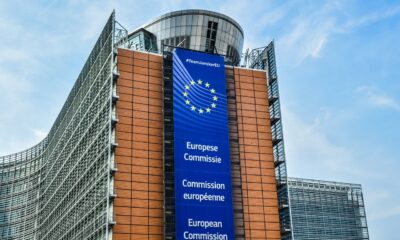Featured
27% of Spanish ESG Funds in the Focus of the European Regulator
Esma estimates that 9.2% of EU-domiciled ‘Article 8’ funds (2,730 out of a total of 29,701 funds) use such words and are, therefore, “potentially affected by the proposal”. They are joined by a further 534 European products which, despite not having been classified as sustainable, have chosen to place such words in their names. Esma’s guidelines are expected to be published in the third quarter of 2023.

Spanish fund managers have classified 285 investment funds as ‘Article 8’, that is, they consider that they “promote environmental and/or social characteristics,” according to the European Commission’s Disclosure Regulation. These products, also known as light green in the industry, are ESG investments, meaning they apply environmental, social, or good governance criteria. But they are less demanding than ‘Article 9’ (or dark green), which has a concrete and measurable sustainability objective.
Of those 285 Spanish light green funds, 27% (77 products) include in their names terms such as sustainability, sustainable, ESG, climate change, green, or social expressions such as education or health. And Esma, the European Securities and Markets Authority, has put the spotlight on this type of name, with a consultation open until February 20th on the requirements to be met by EU-domiciled funds that include words such as these in their names. Its aim is to avoid greenwashing: that products that are not green or ESG should not be called green or ESG.
Read more on the subject and find the most important finance news of the day with the Born2Invest mobile app.
Minimum criteria for funds to be considered sustainable by Esma
Esma estimates that 9.2% of EU-domiciled ‘Article 8’ funds (2,730 out of a total of 29,701 funds) use such words and are, therefore, “potentially affected by the proposal”. They are joined by a further 534 European products which, despite not having been classified as sustainable, have chosen to place such words in their names. The ‘article 9’ products would not be threatened since, a priori, they comply with the thresholds proposed by Esma.
This Authority intends that, if a fund incorporates these terms, it should meet “minimum criteria”. It proposes that the funds that use the expression ‘ESG’ have at least 80% of assets that “promote ESG characteristics”, that is to say, that favor these issues. Funds whose names include the word Sustainable or Sustainability, more pure and assimilable to dark green, should have at least 50% of that 80% allocated to “sustainable investments”.
“Very relevant compliance issues arise from these guidelines” for ‘Article 8’ funds, warns Marta Olavarría, head of sustainable finance at Auren, “which should comply with the minimum thresholds of promotion or investment proposed by Esma”. You may be interested in: 41 funds go from ‘dark green’ to ‘light green’.
The basic problem is that the definition provided by the Disclosure Regulation itself is imprecise. “The European Supervisory Authorities have insisted to the Commission that it has to define what an Article 8 fund is,” explains Olavarría. Find your sustainable investment fund in the fund comparator.
For their part, both Efama (the European Association of Investment Funds and Asset Management) and Eurosif (the European Sustainable Investment Forum) have expressed their views as part of the public consultation launched by Esma. Both agree that it is necessary to distinguish between the deliberate misrepresentation of the characteristics of a product to mislead the client and unintentional error, which occurs without any real intention to mislead.
Esma’s guidelines are expected to be published in the third quarter of 2023, to be complied with in the fourth quarter for new funds, and to be in place by the third quarter of 2024 for existing products.
__
(Featured image by anncapictures via Pixabay)
DISCLAIMER: This article was written by a third party contributor and does not reflect the opinion of Born2Invest, its management, staff or its associates. Please review our disclaimer for more information.
This article may include forward-looking statements. These forward-looking statements generally are identified by the words “believe,” “project,” “estimate,” “become,” “plan,” “will,” and similar expressions. These forward-looking statements involve known and unknown risks as well as uncertainties, including those discussed in the following cautionary statements and elsewhere in this article and on this site. Although the Company may believe that its expectations are based on reasonable assumptions, the actual results that the Company may achieve may differ materially from any forward-looking statements, which reflect the opinions of the management of the Company only as of the date hereof. Additionally, please make sure to read these important disclosures.
First published in elEconomista.es, a third-party contributor translated and adapted the article from the original. In case of discrepancy, the original will prevail.
Although we made reasonable efforts to provide accurate translations, some parts may be incorrect. Born2Invest assumes no responsibility for errors, omissions or ambiguities in the translations provided on this website. Any person or entity relying on translated content does so at their own risk. Born2Invest is not responsible for losses caused by such reliance on the accuracy or reliability of translated information. If you wish to report an error or inaccuracy in the translation, we encourage you to contact us.

-

 Cannabis5 days ago
Cannabis5 days agoLuxembourg’s Cannabis Paradox: Legal at Home, Restricted Everywhere Else
-

 Markets2 weeks ago
Markets2 weeks agoRice Market Update: Prices Dip Amid Weak Exports and Global Pressure
-

 Crowdfunding2 days ago
Crowdfunding2 days agoCommunity Energies 2026: Funding Projects Combating Youth Loneliness
-

 Impact Investing1 week ago
Impact Investing1 week agoEU Expands Leadership in Sustainable Finance with Record Green Bond Impact
























